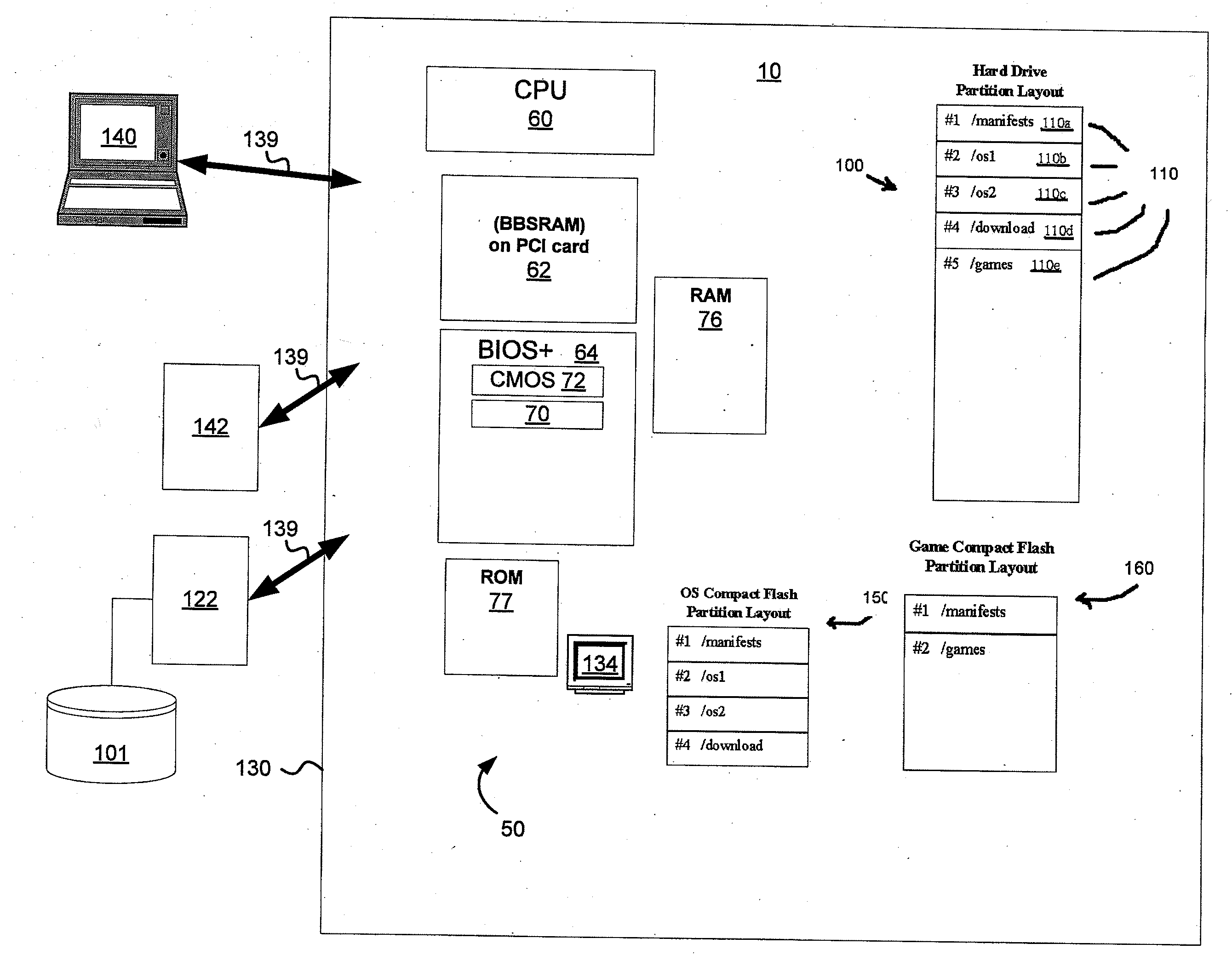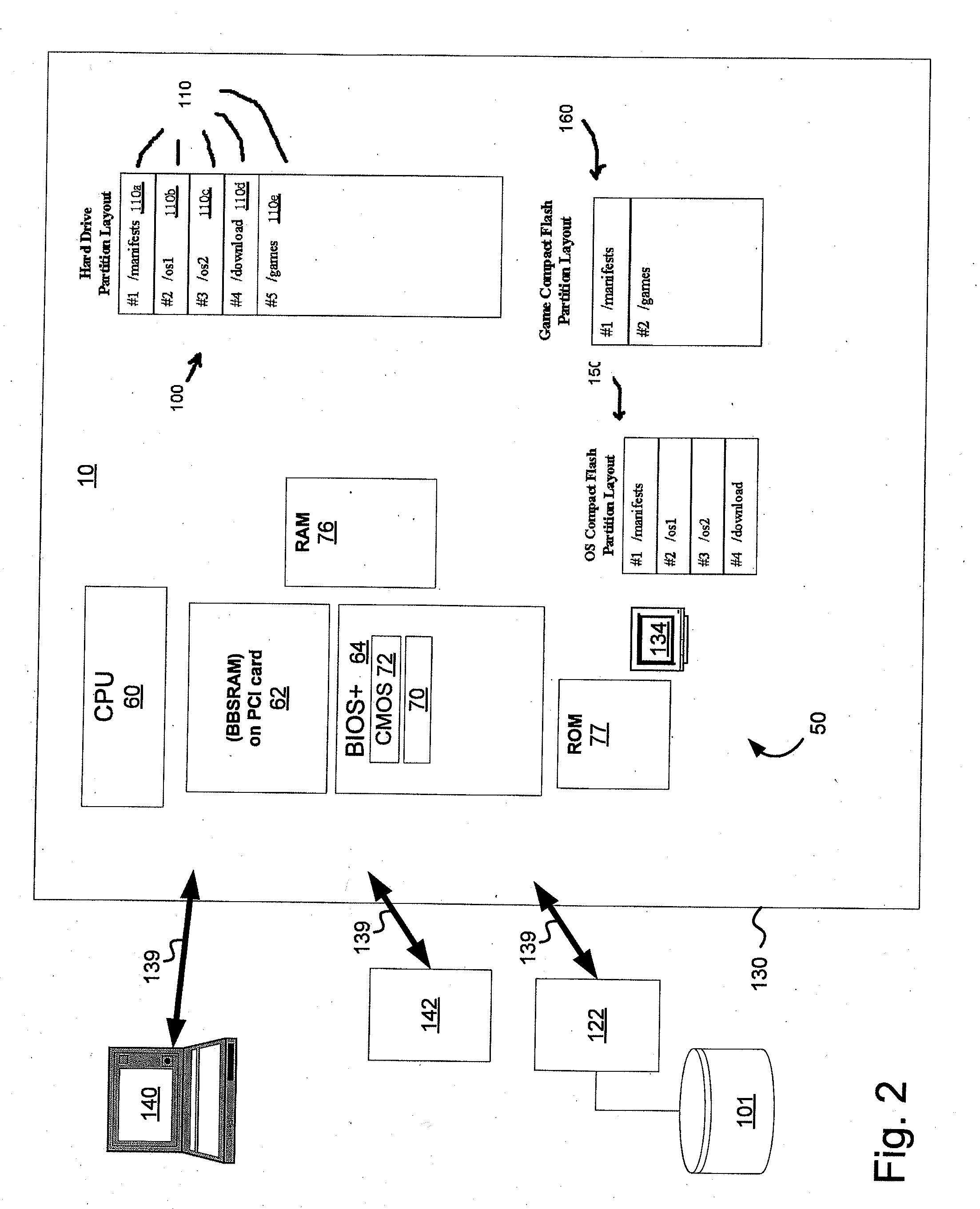Data Integrity and Non-Repudiation
a data integrity and non-repudiation technology, applied in the field of gaming machine authentication system, can solve the problems of reducing affecting the integrity of the data, and requiring a considerable amount of processing time to calculate the hash value over the entire contents of the non-secure media, so as to reduce the boot time of the gaming machine, delay the loading of large files, and improve the load time of the game
- Summary
- Abstract
- Description
- Claims
- Application Information
AI Technical Summary
Benefits of technology
Problems solved by technology
Method used
Image
Examples
Embodiment Construction
[0045] In one embodiment, a system and method that uses digital signature technology to authenticate the contents of one or more manifests on a digital storage device is provided. Each manifest includes a list of file records, wherein each record contains the name of a file stored on the hard disk device, and a signature value derived from the contents of the file on a device. At boot time, the gaming machine first validates its operating system, which also contains the authentication program. If the operating system is valid (not corrupted), then the operating system is loaded into system memory and used in conjunction with the authentication program to authenticate the contents of the manifest and then authenticates the contents of the files using the signature value stored in the manifest. By way of example, but not by way of limitation, files are authenticated using a PVSSR algorithm as they are needed during the loading of the game manager and game application, and throughout n...
PUM
 Login to View More
Login to View More Abstract
Description
Claims
Application Information
 Login to View More
Login to View More - R&D
- Intellectual Property
- Life Sciences
- Materials
- Tech Scout
- Unparalleled Data Quality
- Higher Quality Content
- 60% Fewer Hallucinations
Browse by: Latest US Patents, China's latest patents, Technical Efficacy Thesaurus, Application Domain, Technology Topic, Popular Technical Reports.
© 2025 PatSnap. All rights reserved.Legal|Privacy policy|Modern Slavery Act Transparency Statement|Sitemap|About US| Contact US: help@patsnap.com



